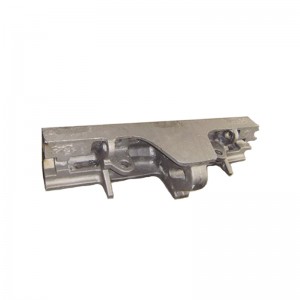
- Afrikaans
- Albanian
- Amharic
- Arabic
- Armenian
- Azerbaijani
- Basque
- Belarusian
- Bengali
- Bosnian
- Bulgarian
- Catalan
- Cebuano
- China
- China (Taiwan)
- Corsican
- Croatian
- Czech
- Danish
- Dutch
- English
- Esperanto
- Estonian
- Finnish
- French
- Frisian
- Galician
- Georgian
- German
- Greek
- Gujarati
- Haitian Creole
- hausa
- hawaiian
- Hebrew
- Hindi
- Miao
- Hungarian
- Icelandic
- igbo
- Indonesian
- irish
- Italian
- Japanese
- Javanese
- Kannada
- kazakh
- Khmer
- Rwandese
- Korean
- Kurdish
- Kyrgyz
- Lao
- Latin
- Latvian
- Lithuanian
- Luxembourgish
- Macedonian
- Malgashi
- Malay
- Malayalam
- Maltese
- Maori
- Marathi
- Mongolian
- Myanmar
- Nepali
- Norwegian
- Norwegian
- Occitan
- Pashto
- Persian
- Polish
- Portuguese
- Punjabi
- Romanian
- Russian
- Samoan
- Scottish Gaelic
- Serbian
- Sesotho
- Shona
- Sindhi
- Sinhala
- Slovak
- Slovenian
- Somali
- Spanish
- Sundanese
- Swahili
- Swedish
- Tagalog
- Tajik
- Tamil
- Tatar
- Telugu
- Thai
- Turkish
- Turkmen
- Ukrainian
- Urdu
- Uighur
- Uzbek
- Vietnamese
- Welsh
- Bantu
- Yiddish
- Yoruba
- Zulu
Jul . 26, 2024 02:09 Back to list
Factories Specializing in Cast Iron Pipe Mould Palets for Enhanced Industrial Applications and Durability
The Evolution and Importance of Cast Iron Pipe Mould Pallets in Manufacturing
In the world of industrial manufacturing, especially within the plumbing and construction sectors, cast iron pipes have long been a staple. Their durability, strength, and resistance to various environmental factors make them ideal for a wide range of applications. However, the production of these pipes requires precise engineering and robust manufacturing practices. One of the essential components in the process of manufacturing cast iron pipes is the mould pallet, which plays a critical role in ensuring the quality and efficiency of production.
Understanding Cast Iron Pipe Mould Pallets
Mould pallets are the platform on which the molds for cast iron pipes are set. These pallets are designed to withstand the significant weight and thermal stress that comes with the casting process. Typically made from high-strength steel or reinforced materials, they ensure stability and reliability during the molding phase.
Mould pallets serve several critical functions in the manufacturing process. Firstly, they provide the necessary support and alignment for the molds, essential for maintaining the geometric integrity of the pipe being produced. Misalignment can lead to defects in the pipes, resulting in increased waste and additional costs. Secondly, mould pallets are designed to facilitate the efficient handling and transportation of the molds within the manufacturing facility. This efficiency streamlines the production process, reducing lead time and enhancing overall productivity.
The Manufacturing Process
The production of cast iron pipes using mould pallets begins with the creating of a sand mold. The mould pallet is placed in a molding machine, which fills it with a mixture of sand and a binding agent. Once the sand has been compacted and set, the mold is ready for the molten cast iron. The molten iron is poured into the mold, forming its shape as it cools and solidifies.
cast iron pipe mould palet factories

After the casting process, the mould pallet is also essential for the demolding phase. The durable construction allows for the easy removal of the solidified pipe without damaging either the pipe or the mold. This ability to efficiently transform a mold into a finished product is critical in maintaining a high production rate, which is vital for meeting market demands.
Factories and Innovation
Today, various factories around the globe specialize in the manufacture of cast iron pipe mould pallets. These factories employ advanced technologies, such as computer numerical control (CNC) machining and automated production lines, to ensure precision and consistency in their products. Modern factories also focus on innovation, continuously assessing new materials and designs that can enhance the performance of mould pallets.
A major trend in recent years has been the push towards sustainability. Many manufacturers are exploring eco-friendly materials and processes to reduce their environmental impact. Investing in high-quality mould pallets not only improves production efficiency but also minimizes material waste and prolongs the lifespan of the moulds themselves, leading to more sustainable manufacturing practices.
Conclusion
The role of cast iron pipe mould pallets is fundamental in the manufacturing process of cast iron pipes. As the industry continues to evolve with advancements in technology and sustainability practices, the significance of these pallets will only grow. By ensuring quality and efficiency in production, mould pallets are essential tools that contribute to the reliability and performance of cast iron pipes. As manufacturers focus on innovation and sustainability, the future for cast iron pipe mould pallets looks promising, paving the way for improved manufacturing practices and high-quality products in the construction and plumbing sectors.
-
Premium Punching Cement Concrete Pipe Mold Pallets Custom ODM Available
NewsJun.10,2025
-
Premium Cast Aluminum Silicon Radiator Castings For Sale
NewsJun.10,2025
-
Custom Cast Steel Pipe Mold Pallet for Durable Precision
NewsJun.10,2025
-
Premium China Iron High Strength Metal Supplier Boilers Castings
NewsJun.09,2025
-
Premium Marine Gear Box Castings Custom & ODM Solutions Buy Now
NewsJun.09,2025
-
Premium Cast Aluminum Parts Casting - Custom & ODM Solutions Available
NewsJun.08,2025

